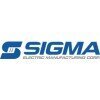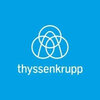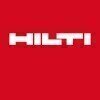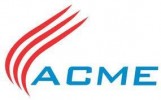
i
SOPAN
Filter interviews by
SOPAN Interview Questions and Answers
27 Interview questions
A safety officer ensures workplace safety by implementing policies, conducting training, and monitoring compliance with safety regulations.
Conduct regular safety inspections to identify hazards, such as checking fire extinguishers and emergency exits.
Develop and implement safety training programs for employees, like fire drills and first aid training.
Ensure compliance with local, state, and federal safety regulati...
Fire is a rapid chemical reaction that produces heat, light, and combustion, often resulting from the ignition of flammable materials.
Fire requires three elements: heat, fuel, and oxygen (the fire triangle).
Examples of fuels include wood, gasoline, and paper.
Heat can be generated from sources like matches, friction, or electrical sparks.
Oxygen is typically sourced from the air, which contains about 21% oxygen.
Fire...
Five S is a methodology for workplace organization and efficiency, focusing on sorting, setting in order, shining, standardizing, and sustaining.
Sort (Seiri): Remove unnecessary items from the workplace. Example: Discarding outdated safety equipment.
Set in Order (Seiton): Organize tools and materials for easy access. Example: Labeling storage areas for fire extinguishers.
Shine (Seiso): Clean the workspace to maint...
ELCB (Earth Leakage Circuit Breaker) and RCCB (Residual Current Circuit Breaker) protect against electrical faults and shocks.
ELCB detects earth faults and disconnects the circuit to prevent electric shock.
RCCB monitors the balance of electrical current and trips when it detects leakage.
Example: ELCB is used in older installations, while RCCB is common in modern electrical systems.
Both devices enhance safety by pr...
Readeytion is not a recognized term in fire and safety; it may be a misspelling or misinterpretation of another concept.
Could be a misspelling of 'radiation', which is relevant in safety protocols.
In fire safety, understanding radiation can help in assessing heat transfer.
If referring to 'readiness', it relates to preparedness in emergency situations.
Fire is a rapid chemical reaction that produces heat, light, and combustion, typically involving flames and smoke.
Fire is the result of a chemical reaction known as combustion.
It requires three elements: heat, fuel, and oxygen (the fire triangle).
Examples of fuels include wood, gasoline, and paper.
Fire can be beneficial (e.g., cooking, heating) or destructive (e.g., wildfires, house fires).
Different types of fires...
A Legal Register at a site is a comprehensive document that outlines all applicable laws and regulations related to safety and compliance.
It includes local, national, and international regulations relevant to fire and safety.
Examples of regulations might include OSHA standards, fire codes, and environmental laws.
The register is regularly updated to reflect changes in legislation.
It serves as a reference for compli...
A mock drill is a simulated emergency exercise to prepare individuals for real-life safety situations.
Purpose: To test and improve emergency response plans.
Types: Fire drills, earthquake drills, evacuation drills.
Participants: Employees, safety officers, emergency services.
Example: Conducting a fire drill to practice evacuation procedures.
Evaluation: Assessing response times and identifying areas for improvement.
A near miss is an incident that could have resulted in an accident but did not, often highlighting safety risks.
Near misses are often referred to as 'close calls' or 'near accidents'.
Example: A worker slips but catches themselves before falling.
They provide valuable insights for improving safety protocols.
Reporting near misses can help prevent future accidents.
Example: A heavy object nearly falls but is caught jus...
Escape holding refers to the methods and strategies used to safely evacuate individuals from hazardous situations.
Types of escape holding include designated escape routes and safe zones.
Example: In a fire, escape holding areas are often marked by signs leading to exits.
Escape holding can involve assembly points where individuals gather after evacuation.
Example: In a building, a stairwell may serve as an escape hol...
SOPAN Interview Experiences
19 interviews found
I applied via LinkedIn and was interviewed in Dec 2024. There was 1 interview round.
(4 Questions)
- Q1. CNG compressor and Dispensers
- Q2. Electrical and tubing work
- Q3. Lcv maintenance
- Q4. Daliy Sale report maintain
I appeared for an interview in May 2025, where I was asked the following questions.
- Q1. What is Rol of safety officer
- Ans.
A safety officer ensures workplace safety by implementing policies, conducting training, and monitoring compliance with safety regulations.
Conduct regular safety inspections to identify hazards, such as checking fire extinguishers and emergency exits.
Develop and implement safety training programs for employees, like fire drills and first aid training.
Ensure compliance with local, state, and federal safety regulations, ...
- Q2. Work permit System, Heera, Hazop, Risk Assesment, must and mantain
- Q3. Audit in internal , all dackument preapring
- Q4. What is mock drill
- Ans.
A mock drill is a simulated emergency exercise to prepare individuals for real-life safety situations.
Purpose: To test and improve emergency response plans.
Types: Fire drills, earthquake drills, evacuation drills.
Participants: Employees, safety officers, emergency services.
Example: Conducting a fire drill to practice evacuation procedures.
Evaluation: Assessing response times and identifying areas for improvement.
- Q5. What is Fire
- Ans.
Fire is a rapid chemical reaction that produces heat, light, and combustion, often resulting from the ignition of flammable materials.
Fire requires three elements: heat, fuel, and oxygen (the fire triangle).
Examples of fuels include wood, gasoline, and paper.
Heat can be generated from sources like matches, friction, or electrical sparks.
Oxygen is typically sourced from the air, which contains about 21% oxygen.
Fire can ...
- Q6. What is Type of permit
- Ans.
A type of permit is a formal authorization allowing specific activities, often related to safety and compliance regulations.
Types of permits include work permits, fire permits, and environmental permits.
A hot work permit is required for activities like welding or cutting that could ignite a fire.
A confined space entry permit is necessary for work in areas with limited access and potential hazards.
A fire safety permit e...
- Q7. What is Ligal Ragester at site
- Ans.
A Legal Register at a site is a comprehensive document that outlines all applicable laws and regulations related to safety and compliance.
It includes local, national, and international regulations relevant to fire and safety.
Examples of regulations might include OSHA standards, fire codes, and environmental laws.
The register is regularly updated to reflect changes in legislation.
It serves as a reference for compliance ...
- Q8. What is Emergncy plan
- Ans.
An emergency plan outlines procedures to follow during crises to ensure safety and effective response.
Identify potential emergencies (e.g., fire, natural disasters, chemical spills).
Establish clear communication channels for alerts and updates.
Designate roles and responsibilities for team members during emergencies.
Create evacuation routes and assembly points for safe exit.
Conduct regular drills to ensure preparedness ...
- Q9. What is First Aid , CPR
- Q10. What is LEL, UEL
- Ans.
LEL (Lower Explosive Limit) and UEL (Upper Explosive Limit) define the concentration range of flammable gases in air.
LEL is the minimum concentration of a gas in air that can ignite.
UEL is the maximum concentration of a gas in air that can ignite.
For example, methane has an LEL of 5% and a UEL of 15% in air.
If the concentration is below LEL or above UEL, combustion cannot occur.
- Q11. What is Fire Defnition
- Ans.
Fire is a rapid chemical reaction that produces heat, light, and combustion, typically involving flames and smoke.
Fire is the result of a chemical reaction known as combustion.
It requires three elements: heat, fuel, and oxygen (the fire triangle).
Examples of fuels include wood, gasoline, and paper.
Fire can be beneficial (e.g., cooking, heating) or destructive (e.g., wildfires, house fires).
Different types of fires incl...
- Q12. What is PPE with IS Code
- Ans.
PPE stands for Personal Protective Equipment, essential for ensuring safety in hazardous environments, guided by IS codes.
PPE includes items like helmets, gloves, goggles, and masks to protect against various hazards.
IS 2925:1984 specifies the requirements for industrial safety helmets.
IS 15324:2003 outlines the specifications for safety footwear.
IS 4770:1988 provides guidelines for the use of respiratory protective de...
- Q13. What is Type of Escapeholding
- Ans.
Escape holding refers to the methods and strategies used to safely evacuate individuals from hazardous situations.
Types of escape holding include designated escape routes and safe zones.
Example: In a fire, escape holding areas are often marked by signs leading to exits.
Escape holding can involve assembly points where individuals gather after evacuation.
Example: In a building, a stairwell may serve as an escape holding ...
- Q14. What is Five, S
- Ans.
Five S is a methodology for workplace organization and efficiency, focusing on sorting, setting in order, shining, standardizing, and sustaining.
Sort (Seiri): Remove unnecessary items from the workplace. Example: Discarding outdated safety equipment.
Set in Order (Seiton): Organize tools and materials for easy access. Example: Labeling storage areas for fire extinguishers.
Shine (Seiso): Clean the workspace to maintain s...
- Q15. How maney types of Fire Extungsar and use of fire
- Ans.
There are several types of fire extinguishers, each designed for specific fire classes and materials.
Water Extinguisher: Used for Class A fires (wood, paper, textiles).
Foam Extinguisher: Effective for Class A and B fires (flammable liquids).
Dry Powder Extinguisher: Suitable for Class A, B, and C fires (gas fires).
CO2 Extinguisher: Best for Class B and electrical fires.
Wet Chemical Extinguisher: Designed for Class K fir...
- Q16. What is near miss
- Ans.
A near miss is an incident that could have resulted in an accident but did not, often highlighting safety risks.
Near misses are often referred to as 'close calls' or 'near accidents'.
Example: A worker slips but catches themselves before falling.
They provide valuable insights for improving safety protocols.
Reporting near misses can help prevent future accidents.
Example: A heavy object nearly falls but is caught just in ...
- Q17. What is Axcident and incedent
- Ans.
An accident is an unplanned event causing harm, while an incident is a broader term for any event that disrupts normal operations.
Accidents often result in injury or damage, e.g., a car crash.
Incidents can include near misses, e.g., a worker almost slipping but catching themselves.
Accidents are usually specific and identifiable, while incidents can be more general.
Both require investigation to prevent future occurrence...
- Q18. Prosses plant hot work start then what is LEL
- Ans.
LEL stands for Lower Explosive Limit, the minimum concentration of a gas in air that can ignite.
LEL is expressed as a percentage of gas in air.
For example, the LEL for methane is about 5% by volume.
Hot work activities like welding can ignite gases if LEL is exceeded.
Monitoring LEL is crucial in preventing explosions during hot work.
- Q19. What is work at hight
- Q20. What is ELCB, RRCB
- Ans.
ELCB (Earth Leakage Circuit Breaker) and RCCB (Residual Current Circuit Breaker) protect against electrical faults and shocks.
ELCB detects earth faults and disconnects the circuit to prevent electric shock.
RCCB monitors the balance of electrical current and trips when it detects leakage.
Example: ELCB is used in older installations, while RCCB is common in modern electrical systems.
Both devices enhance safety by prevent...
- Q21. Types of Hazards
- Ans.
Hazards are potential sources of harm or adverse effects in various environments, categorized into different types.
Physical Hazards: Examples include slips, trips, and falls due to wet floors.
Chemical Hazards: Exposure to toxic substances like asbestos or pesticides.
Biological Hazards: Risks from bacteria, viruses, or other pathogens, such as in healthcare settings.
Ergonomic Hazards: Poor workstation design leading to ...
- Q22. What is Readeytion
- Ans.
Readeytion is not a recognized term in fire and safety; it may be a misspelling or misinterpretation of another concept.
Could be a misspelling of 'radiation', which is relevant in safety protocols.
In fire safety, understanding radiation can help in assessing heat transfer.
If referring to 'readiness', it relates to preparedness in emergency situations.
- Q23. In case of Radiography , sorce for 30 to 40 quri , how area Baricating for miter
- Q24. How use of 24,bolt confindspace
- Ans.
Using a 24-volt system in confined spaces enhances safety and efficiency in fire and safety operations.
24-volt systems are safer than higher voltage systems, reducing the risk of electric shock.
They are commonly used in portable lighting and ventilation equipment in confined spaces.
Example: A 24-volt fan can improve air circulation in a confined area, reducing the risk of toxic gas buildup.
24-volt tools can be used for...
I applied via Job Fair and was interviewed in Nov 2024. There were 2 interview rounds.
(2 Questions)
- Q1. Digree and layout released
- Q2. Fittings standard
(2 Questions)
- Q1. Hydrortest relted
- Q2. Pepar work lhs loops etc
Interview Preparation Tips
I appeared for an interview in May 2025, where I was asked the following questions.
- Q1. What are your current role and responsibilities?
- Ans.
As an HR Manager, I oversee recruitment, employee relations, and compliance to foster a productive workplace culture.
Manage the recruitment process, including job postings, interviews, and onboarding new employees. For example, I recently streamlined our onboarding process, reducing time-to-hire by 20%.
Develop and implement HR policies and procedures to ensure compliance with labor laws and regulations, such as updatin...
- Q2. What is your availability in terms of joining the position?
- Ans.
I am available to join immediately, but I can also accommodate a notice period if required by my current employer.
I can start immediately if needed, as I am currently not employed.
If a notice period is required, I can provide two weeks' notice.
I am flexible with start dates to align with the team's needs.
I can also discuss options for remote onboarding if necessary.
I appeared for an interview in Mar 2025, where I was asked the following questions.
- Q1. Roles and responsibility
- Q2. About Piping and Structure fabrication and Erection.
I appeared for an interview in Jan 2025, where I was asked the following questions.
- Q1. Details of piping fabrication and election process.
- Q2. How to do hydro testing of pipelines.
- Ans.
Hydro testing of pipelines involves filling them with water to check for leaks and ensure structural integrity under pressure.
1. Prepare the pipeline by cleaning and inspecting it for any visible defects.
2. Fill the pipeline with water, ensuring all air is purged from the system.
3. Pressurize the pipeline to the specified test pressure, typically 1.5 times the operating pressure.
4. Monitor the pressure for a specified ...
I appeared for an interview in Oct 2024, where I was asked the following questions.
- Q1. Technical related
- Q2. Behaviourial related questions
(1 Question)
- Q1. Experience and ctc
Interview Preparation Tips
(1 Question)
- Q1. WHAT IS SAFETY, HAZARD, PRECUATION
I applied via Company Website and was interviewed in Mar 2023. There were 3 interview rounds.

What is the CNG?hhhj
(1 Question)
- Q1. How many years have you been working ?
- Ans.
I have been working as a Junior Engineer for 2 years.
I have 2 years of experience as a Junior Engineer.
I started working as a Junior Engineer 2 years ago.
I have gained valuable skills and knowledge during my 2 years of work experience.
Interview Preparation Tips
- Technical
- Cng compressor
Top trending discussions






SOPAN Interview FAQs
The duration of SOPAN interview process can vary, but typically it takes about less than 2 weeks to complete.
Tell us how to improve this page.
SOPAN Interviews By Designations
- SOPAN Fire & Safety Officer Interview Questions
- SOPAN Senior Engineer Interview Questions
- SOPAN Assistant Manager Service Interview Questions
- SOPAN Safety Officer Interview Questions
- SOPAN Assistant Manager Interview Questions
- SOPAN HR Manager Interview Questions
- SOPAN Senior Project Engineer Interview Questions
- SOPAN Junior Engineer Interview Questions
- Show more
Interview Questions for Popular Designations
Overall Interview Experience Rating
based on 33 interview experiences
Difficulty level
Duration
Interview Questions from Similar Companies
|
Mechanical Engineer
29
salaries
| ₹2 L/yr - ₹6 L/yr |
|
Assistant Manager
23
salaries
| ₹4.6 L/yr - ₹7 L/yr |
|
QA QC Engineer
22
salaries
| ₹3.6 L/yr - ₹6.4 L/yr |
|
Senior Civil Engineer
18
salaries
| ₹4.2 L/yr - ₹8.6 L/yr |
|
Project Manager
16
salaries
| ₹11.3 L/yr - ₹17 L/yr |

Sigma Electric Manufacturing Corporation

TÜV SÜD

Ceasefire Industries

TKIL
- Home >
- Interviews >
- SOPAN Interview Questions












